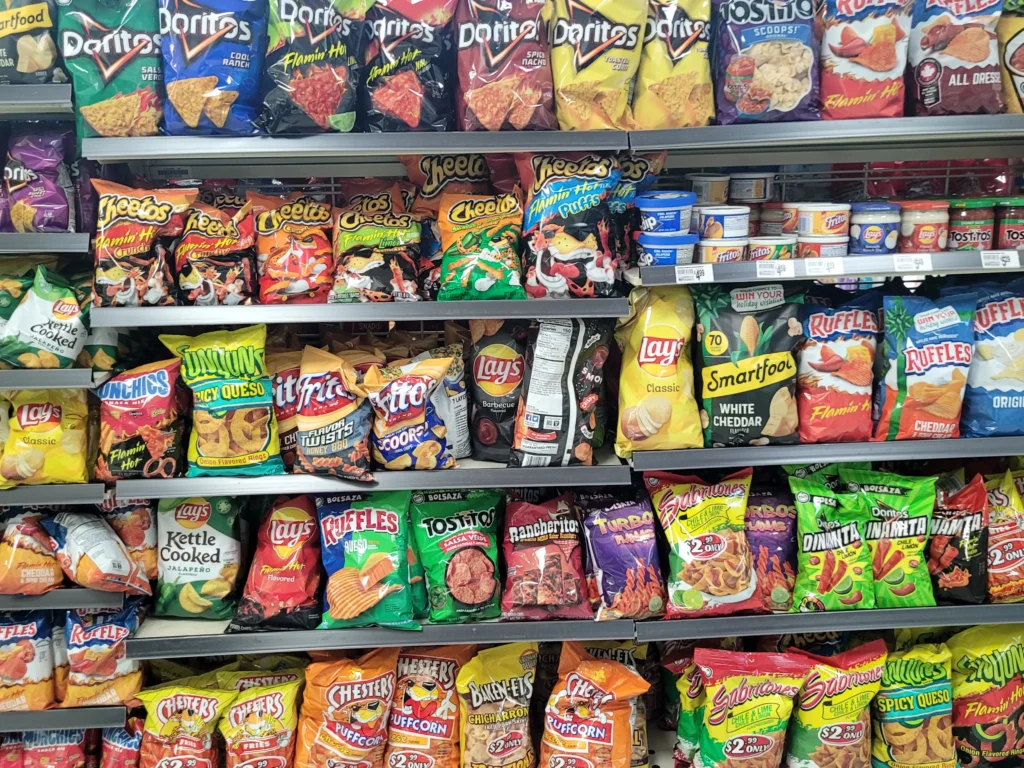Food & Climate
A 10% increase in income results in an 11% increase in the demand for imports of ultra-processed foods and a 7% increase in the demand for imports of unprocessed and minimally processed foods, according to a new report today, that “Food & Climate” platform received.
Ultra-processed foods typically have more than one ingredient that you never or rarely find in a kitchen. They also tend to include many additives and ingredients that are not typically used in home cooking, such as preservatives, emulsifiers, sweeteners, and artificial colours and flavours. These foods generally have a long shelf life.
The report from the Food and Agriculture Organization of the United Nations (FAO, entitled Trade and Nutrition: Policy Coherence for Healthy Diets, emphasizes the need to strengthen policy coherence between trade and nutrition sectors to make sure that trade does not undermine diet quality and contribute to rising rates of obesity and overweight.
What is ultra-processed food?
The term ‘ultra-processed foods’ comes from the NOVA food classification system, which was developed by researchers at the University of São Paulo, Brazil, according to “Heart Matters Magazine“. The system places food into four categories based on how much they have been processed during their production:
Unprocessed or minimally processed foods, which includes produce such as fruit, vegetables, milk, fish, pulses, eggs, nuts and seeds that have no added ingredients and have been little altered from their natural state.
Processed ingredients, which includes foods that are added to other foods rather than eaten by themselves, such as salt, sugar and oils.
Processed foods, which are made by combining foods from groups 1 and 2, which are altered in a way that home cooks could do themselves. They include foods such as jam, pickles, tinned fruit and vegetables, homemade breads and cheeses.
And ultra-processed foods, which FAO’s report said that it witnesses the largest consumption increase among all kinds of foods when income rises.
The report shows that the international trade of food and agricultural products has grown robustly in recent decades and makes very significant contributions to food and nutrient diversity, availability and affordability around the world.
At the same time, trade can, in some contexts, be an accelerator of unwelcome changes in dietary patterns, boosting consumption of foods with low nutritional value, and high in fats, sugar and/or salt. This highlights the need to develop trade policies that are coherent with national nutrition and public health objectives, according to The State of Agricultural Commodity Markets (SOCO) 2024.

“The expansion of global food trade has been influenced by multilateral trade rules that have shaped a freer, fairer, and more predictable trade environment, which, along with an increasing number of regional trade agreements, has promoted trade in food,” said FAO Director-General QU Dongyu.
5 000 trillion kilocalories
Nearly 5 000 trillion kilocalories were traded in 2021, more than double the dietary energy traded in 2000. Daily per capita food trade increased to1 640 kcal from 930 over that time, according to FAO’s report.
And between 1961 and 2021, the global per capita average dietary energy available for human consumption increased by 35 percent, from 2 200 to 2980 calories per person per day. In 1961, staple foods accounted for 57.4% and declined to 48.4 percent. The share of animal source foods grew from 12.2 percent to 15.1% and that of fats and oils increased from 8.4 to 12.7%.
Per capita trade in vitamin C and calcium from food increased by almost 90% between 2000 and 2021.
In 2020, countries produced an average of 120 different food items, while trade lifted the number of food items available to an average of 225, with significant growth recorded in the past decade.
The report notes that links between trade and nutrition are intricate and heterogeneous, and warrant closer attention. As incomes rise, a welcome effect of development, import demand for ultra-processed foods rises even faster, underscoring the utility of enabling policy makers to consider the role of nutrition.
International trade on average doubles the diversity of foods available in a country catalyzing more diverse food supply and diets which are a net plus for nutrition goals, especially in countries with less diverse geographies such as Norway.
Trade-driven diversity also leads to a more equal distribution of nutrients such as vitamin C, calcium, and zinc, which is key given that the domestic food production of many countries does not meet the nutrient requirements of their populations.
Food prices tend to be lower in countries that are open to trade. This finding applies across the board including staples, fresh foods, and processed foods.

Staple foods account for the largest share of calories traded, but their share is declining while those of fats and oils, pulses, seeds and nuts and animal-source foods is rising.

